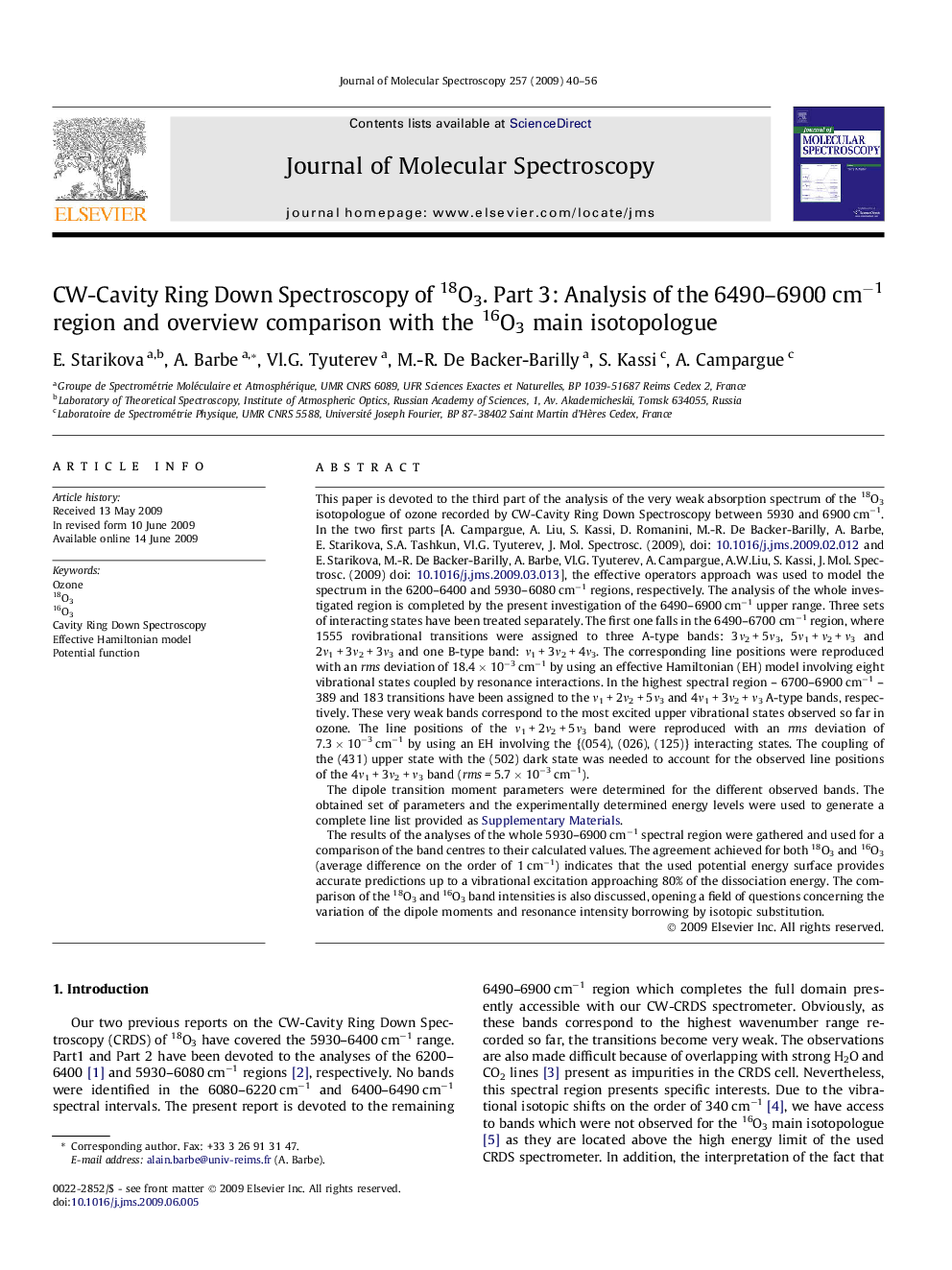| Article ID | Journal | Published Year | Pages | File Type |
|---|---|---|---|---|
| 5415632 | Journal of Molecular Spectroscopy | 2009 | 17 Pages |
Abstract
The results of the analyses of the whole 5930-6900Â cmâ1 spectral region were gathered and used for a comparison of the band centres to their calculated values. The agreement achieved for both 18O3 and 16O3 (average difference on the order of 1Â cmâ1) indicates that the used potential energy surface provides accurate predictions up to a vibrational excitation approaching 80% of the dissociation energy. The comparison of the 18O3 and 16O3 band intensities is also discussed, opening a field of questions concerning the variation of the dipole moments and resonance intensity borrowing by isotopic substitution.
Related Topics
Physical Sciences and Engineering
Chemistry
Physical and Theoretical Chemistry
Authors
E. Starikova, A. Barbe, Vl.G. Tyuterev, M.-R. De Backer-Barilly, S. Kassi, A. Campargue,
